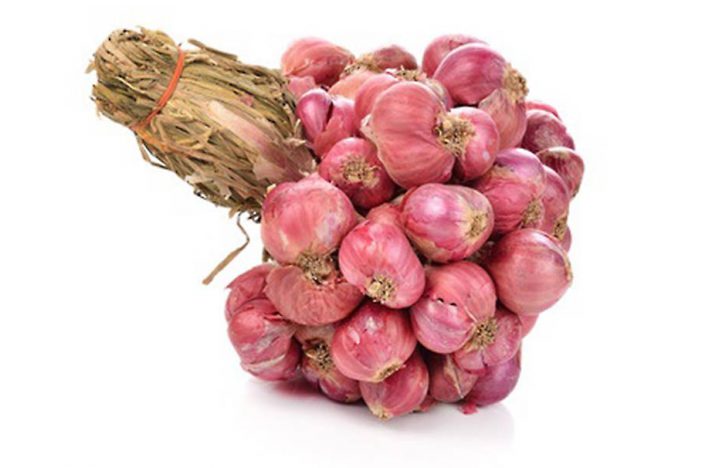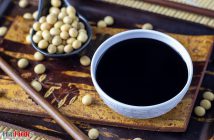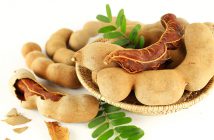In Thai cuisine, shallots are popularly used in fresh cooking, and a staple in making most Thai curry pastes. Crispy fried shallots are a popular dish garnish.
หอมแดง (hawm daeng) or Thai red shallot is a tiny variety with about a width of a thumb (1.5-2.5 cm) in diameter. Its bulbs often consist of one, but sometimes two and even more cloves, its skins can vary from rose red to purplish red as well as magenta in colour, and its off-white flesh is usually tinged with magenta. As a species of Allum cepa (it used to be classified separately in species Allum ascalonicum), Thai red shallots also taste somewhat like common onion, but have a more pungent odour and a deeper flavour. The red shallots are used in various ways in Thai cuisine. Different varieties of shallots often have different sizes, but the amount of use of them is not so critical. Therefore, we can make our own rough estimate on how many bulbs to use, based on the Thai red shallots’ sizes are noticeably about a width of a thumb.
Similar to garlic and onions, when sliced or chopped, fresh shallots generally release substances that irritate human eyes, resulting in the production of tears.
Fresh Shallots
Fresh shallot slices are often added in many Thai salads, especially in most spicy salads in Isan (north-eastern) style. They are slightly sweet and mild and leave a less aftertaste or onion breath. Cucumber relish, consisting of fresh cucumber, fresh shallots and fresh chili slices under a solution of vinegar, sugar and salt, is popularly eaten in small quantities along with Thai fish cake, satays, yellow curries, and so forth. Nam jim jaew, a simple combination of fresh shallot slices, fresh garlic slices, crushed chili, fish sauce, lime juice (sometimes tamarind paste) and chopped spring onion, is a popular spicy dip eaten along with grills or deep-fries. The fresh shallots are also a staple in making most Thais curry pastes. They are often roughly sliced to ease in grinding with other ingredients.
Many Thai soups often include freshly crushed shallots to obtain slight sweetness and fragrance. Due to Thais indigenous knowledge, the Thais often add vegetables having strong odours, such as shallots, coriander roots, culantro and fresh galangal slices in some their tom yum soups to cover the unpleasant smell of meats, especially the fishy smell of fish.
Traditional Thai meals always have a bowl of a spicy dip to eat along with either fresh or parboiled vegetables or fired or grilled fish. To make this, skin-on shallots, skin-on garlic cloves and fresh chili peppers are roasted to obtain a smoky dimension before being pounded together with another ingredient (popularly cooked fish).
Crispy fried shallots
The slices of fresh shallots are also popularly deep-fried into crispy pieces to sprinkle on many dishes, for example, grills, deep-fries, rice porridge, yellow curries, and so forth as a dish garnish. In addition, these crispy pieces also add additional fragrance and enhance flavour to these Thai dishes. To make these, the skins of the shallots are removed, and then slice the bulbs into thin slices. Deep-fry these slices in plenty of oil (enough to submerge them) in a deep frying pan over a low heat until they turn crispy and golden-brown. They should be fried over a low heat to make sure that they are dried up before turning brown. This to end up the crispy fried shallots without soggy and greasy pieces.
If making your own these crispy pieces seems too difficult to deal with in your home kitchen, ready-made crispy fried shallots are also available in Asian markets. Choose ones that seem loose and sound crispy when the package is tapped.





